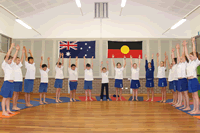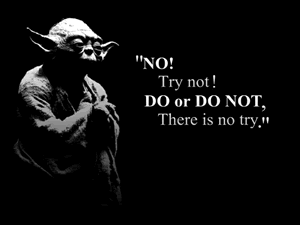 Techniques to teach breathing to children.
Techniques to teach breathing to children.
By their very nature, young children are present in what they are doing. They notice the butterflies, the rainbows and the beautiful flowers.
They fully experience their emotions without thought.
When they are sad they cry and when they are happy they laugh and they giggle.
As children enter school age, they become exposed to peer group environments and absorb new influences, promoting conformity. This social conditioning occurs outside of parental oversight, and enables children to adapt very quickly and learn how to best survive in their new environment.
Unfortunately, our society places high regard on conformity, appearance, achievement and popularity.
As children come into their tween years, their awareness of others, and the opinions they form, grows.
The importance of being accepted by their peers continues growing long into their teenage years.
Yoga and mindfulness offer essential life skills that allow kids to remain true to themselves and their true nature. Yoga and mindfulness teaches kids to listen to their heart and know what makes them feel happy, truly happy.
Teaching them skills they can use to calm themselves when they are angry and soothe themselves when they are distressed will serve them not only through the turbulent teenage years, but also for later life.
When the challenges of peer pressure, body image, puberty, hormones, the opposite sex (and the list goes on) are facing them, the skills mindfulness and yoga offers will support them physically, mentally, socially and emotionally.
A Summary of Benefits
Physical
• Overall muscular strength and tone are increased
• Increased muscular strength contributes to joint health
• Aids in digestion and elimination
• Boosts metabolism and weight loss
• Improves flexibility
• Strengthens immune system
• Builds balance and coordination
• Improves overall body awareness
Emotional
• Promotes emotional awareness and ability to manage emotions
• Encourages calmness
• Teaches students to respond, rather than react
• Promotes self regulation
• Improves impulse control
• Develops an understanding of values, personal qualities and emotional responses
Academic
• Enhances learning readiness
• Encourages self-discipline
• Increases concentration and focus
Spiritual
• Encourages connection to inner self and innate wisdom
• Enhances understanding and experience of interconnectedness
Mental
• Develops concentration and focus
• Teaches children how to work with their minds
• Releases stress and anxiety
• Improves quality of attention
• Develops mind/body connection
Social
• Boosts confidence
• Teaches self respect and respect of others
• Encourages altruism
• Develops empathy
• Encourages healthy relationships
This week I thought we should look at the breath. We all breathe. You don’t have to be taught to breathe yet it is something that can lift our energy when we are lethargic, calm us when we are overwhelmed and help us self regulate and reconnect with our selves.
Breath
Why is Breath Important?
What separates mindfulness and yoga from other forms of exercise is the use of the breath. Whether it is to calm or to energise, breath awareness is an essential element of any mindfulness and yoga practice.
In yoga we breathe through the nose for both inhalation and exhalation, and we actively engage the abdominal muscles when we do so.
Breathing into the belly is natural and as babies we do it automatically. As we grow, some of us breathe more into the upper chest.
When we feel unsafe, the sympathetic nervous system activates and
our bodies go into fight or flight mode. This usually triggers shallow
breathing in the upper chest. The problem here is that even when we
are not in a stressful situation, the habit of shallow breathing causes us
to stay in a stressed state and the sympathetic nervous system remains
active. By consciously breathing into the belly, we are activating the
parasympathetic nervous system, which helps our body relax, to find
harmony and feelings of well being.
Observe the children when they are lying on their backs breathing – see if the belly rises or the chest?
Anxious, depressed children are most likely to shallow breathe into the
upper chest. Aggressive, belligerent children are most likely to have
irregular breathing. Calm and happy children are most likely to breathe
naturally into the belly.
Breathing deeply and evenly makes us feel better and helps relieve any symptoms of depression, anxiety, aggression or fatigue.
When to Teach Breathing
For children under the age of eight years, teaching any form of breath
regulation is not only difficult, but can be unsafe.
The lungs are not fully developed in children until they reach eight years of age.
So how do you teach young children of this age to use the breath?
The breath is introduced through actions such as smelling, snoring, blowing, sneezing and more.
These actions can be brought into each posture or between each
posture so that the breath is constantly present in each instruction. This will keep the children calm, focused, energised and present.
The following excerces include some age appropriate suggestions for
younger children (under eight years old) and over the age of eight years.
The Breath
When kids can see things moving due to their breath, they will become
engaged in the activity for longer.
Use of props such as cotton buds, pom-poms or ping pong balls is a
great way to encourage exhalation. Straws can be used as a tool to
focus the breath toward the object you are blowing, to have races or create goals to blow the balls towards.
Blow Bubbles
Using bubble mixture, kids will need to control and direct the breath to
create bubbles.
Watch the Belly
Place a flower, a crystal, a toy, a scarf or a hand on the chest or tummy and watch it go up and down as you lay there and breathe.
Feel the Breath
Blow onto different body parts – blow onto your toes. Cool them down
or warm them up with the breath.
Blow on your friend’s hair and watch it move.
Blow into your hands and feel the warm breath.
Laying the children’s heads on each other’s tummy is a great way for
children to feel the lungs gently rising and falling.
Birthday Candles
Blowing out birthday candles is a great way for children to control their
exhalation. For preschoolers who are starting to count with pride, blowing out as many breaths as there are candles is a lovely way to practice their counting as well as their breathing.
Sipping Straws
Disposable straws can be used to encourage inhalation by sipping in
and blowing out to encourage exhalation.
Smell
On any adventure, in any pose, use the action of smell to encourage
use of the breath.
• Smell the flowers – plastic, real or imaginary.
• Smell an animal;
• Smell a place;
• Smell a food/drink;
• Smell a person;
• Smell something from nature.
Ways to Use Breath
Angel Breath
Either stand up or sit with the arms extended down but away from the
hips. Inhale as you bring the arms up, making the outline of wings with
the hands. As you exhale take the arms down, tracing the outline of the wings. Close the eyes continuing with the arms rising and falling with inhale and exhale.
Clock Face Breath
Sitting comfortably, find a focus spot on the wall directly in front of you.
Imagine a clock face and keeping the head perfectly still; allow the eyes to trace around from 12 o’clock…3 o’clock…6 o’clock…9 o’clock…12 o’clock. Then close the eyes, inhale to the belly and exhale from the belly. Open the eyes and repeat the eyes tracing in a clockwise orientation. Repeat twice more and then change to an anti-clockwise orientation with the eyes for another three breaths.
Back to Back Breath
Sit on the floor cross-legged back to back with your partner. Close your
eyes sit up tall and start to bring your awareness to your partner’s
breath. Can you feel them breathing? Can you match your breath to
theirs? Can you breathe as one, like a clam in the ocean: two sides,
but one living creature?
Over Nine Years of Age
Stepped Breath
Sitting or lying down, place the hands on the belly button with the
middle fingers touching above the belly button. Spread the fingers wide and breathe into the belly, feeling it enlarge and the fingers spreading.
Take the hands to the bottom of the ribs (above the waist) on the sides
and breathe into the middle of the lung, feeling the ribs expanding out to the side.
Take the finger tips under the collar bones and breathe into the very top of the lung, feeling the upper chest lifting.
“Empty the lungs by breathing all the way out and then breath into the
belly for 1, 2 ,3, hold, breath into the bottom rib 1, 2, 3, hold and then
breath into the upper chest 1, 2 , 3, hold” and then “Exhale 8, 7, 6, 5, 4,
3, 2, 1.”
Continue for three breaths and then breathe normally.
Caution: Do not over fill the lungs or the children will get light headed.
Ask the children to self-regulate and decrease the count if they feel that they are filling their lungs too much.
Nikki Massaioli
Nikki is a self confessed kidult, enabling her to easily take her lifelong love of yoga, mindfulness and commitment to personal growth into the world of children.
Her energy, passion and enthusiasm gives her an innate ability to see and share the world with the lightness and playfulness of a child yet with the wisdom and maturity of a teacher.
Nikki has spent the last 14 years of her life as the Founder and Director or Yoga To Go, Yoga To Go Kids and Life Skills Group, sharing the amazing transformative benefits of Yoga and Mindfulness through out schools and the corporate world.
Nikki launched Yoga To Go Kids and recently launched Life Skills Group. Life Skills Group is Australia’s leading curriculum based Primary, Secondary, and Professional Life Skills wellbeing provider.
Delivering wellbeing programs that focus on developing physical, social, emotional skills and self-regulating strategies to cultivate wellbeing, resilience and lifelong learning.
Life Skills Group combines fundamental movement, positive psychology and cognitive affective neuroscience with scientifically proven mindfulness activities and yoga techniques to empower individuals with life skills to thrive in their personal, professional and academic lives.
As well as running age specialty Kids Mindfulness and Yoga teacher-training programs, Nikki delivers key note addresses, workshops and endorsed Professional Development Programs for teachers in school, she has taught extensively throughout the world, running retreats, Kids Yoga teacher training programs and workshops.
Nikki has delivered numerous keynote addresses on well being and Life Balance
She has had numerous articles published in health and yoga magazines, and in newspapers.
Nikki’s has over 20 years of Yoga experience;
Nikki is the mother of two beautiful children – a teenage son, Nathaniel, and a thirteen-year-old daughter, Lucia, with whom she has shared her love of health, wellbeing and yoga. The practice of yoga, mindfulness, professional development mixed with the blend of many roles – mother, partner,mentor, director of a company, friend and daughter – combined with a lifetime of dedication and commitment to personal growth have been formative in developing Nikki’s teaching style. She is excited to offer her collective experience to introduce the benefits of Life Skills to children, teachers and families throughout the community.
For more information please visit: www.lifeskillsgroup.com.au
or call 1300 889 018


